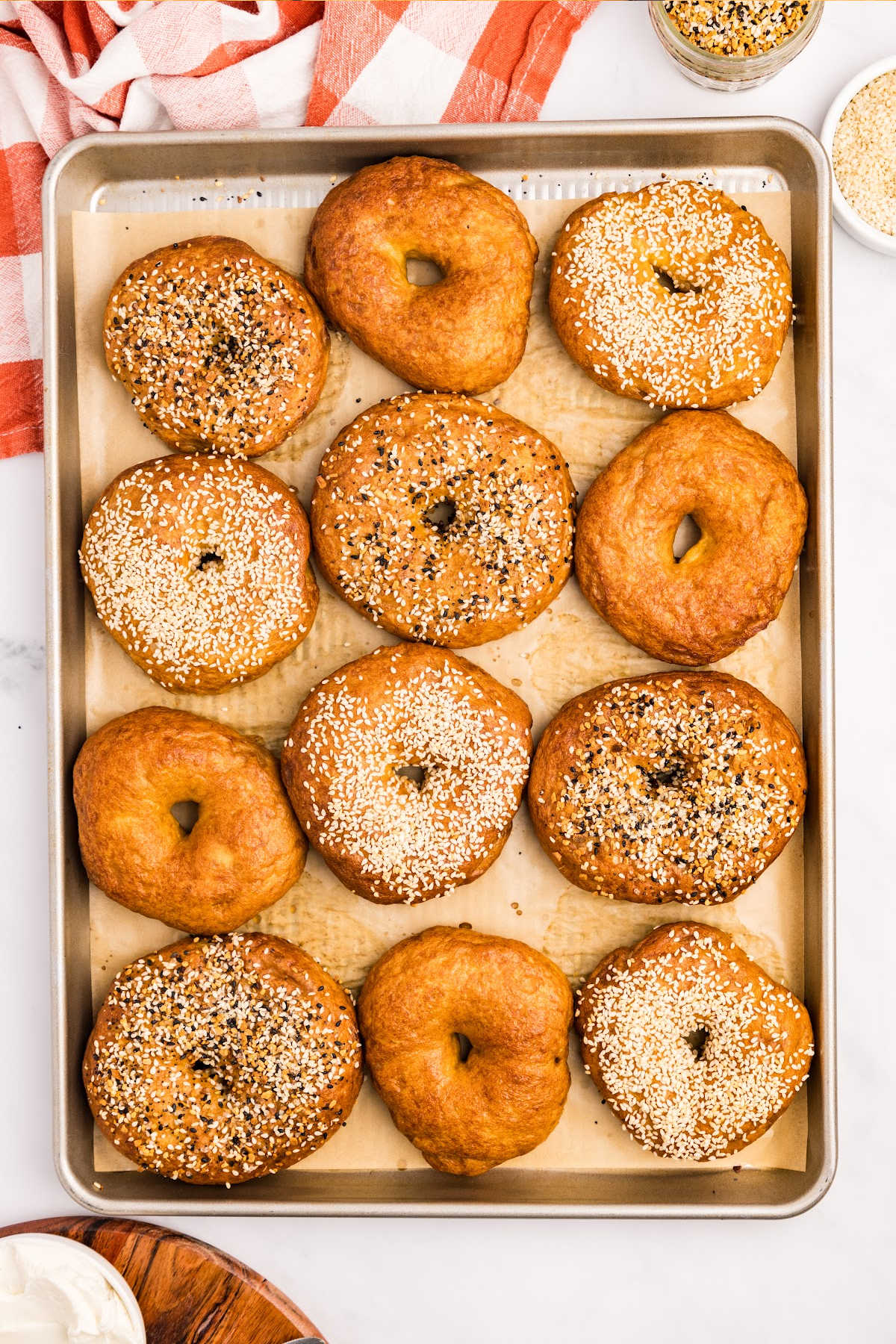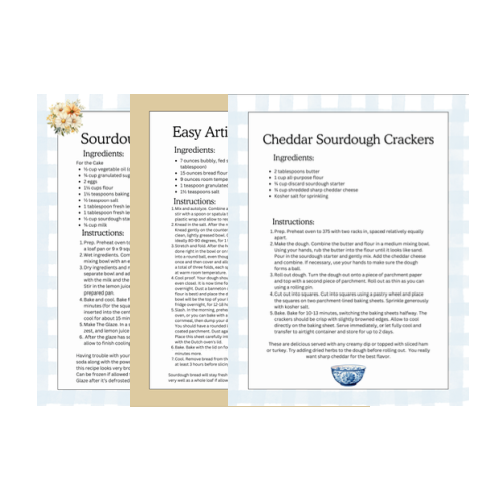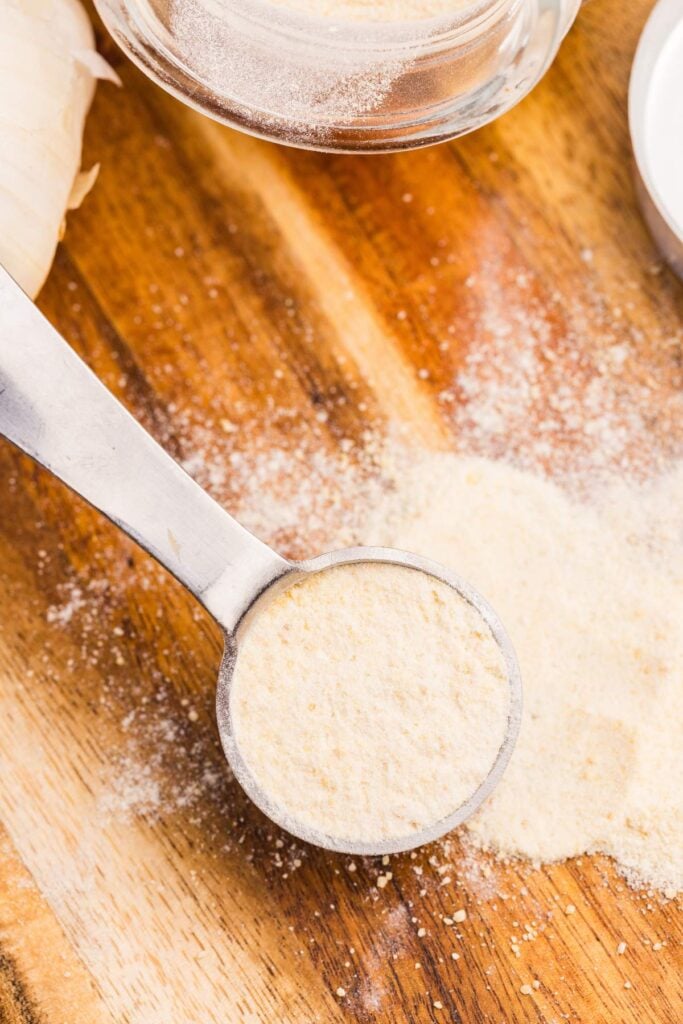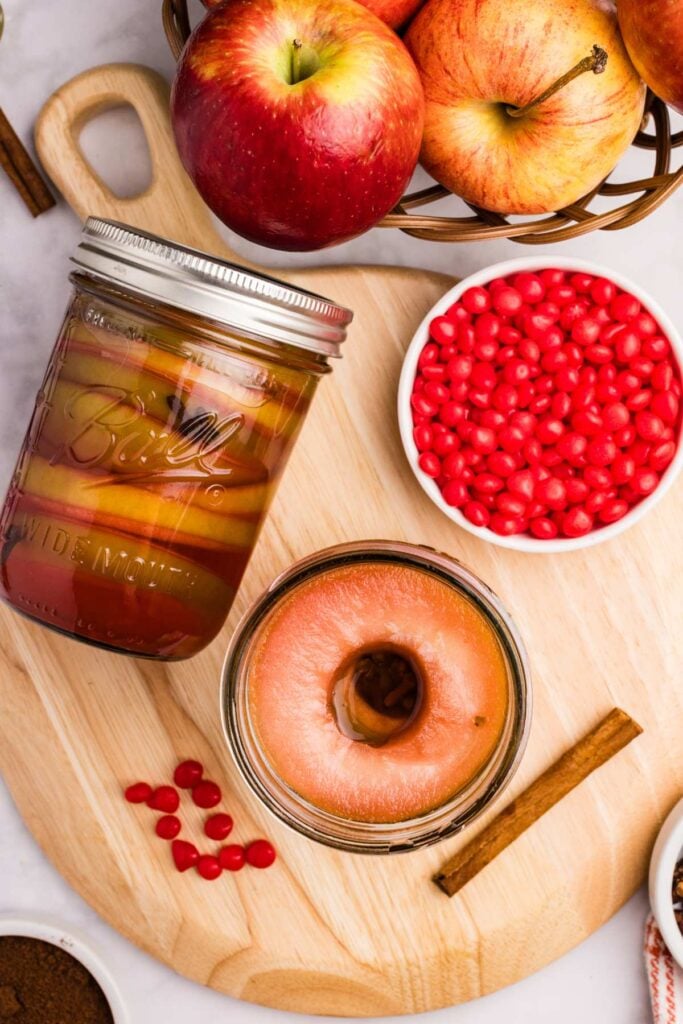Lots of steps, lots of time, but absolutely worth the trouble. These sourdough bagels, like most sourdough recipes, are mostly hands-off with a little bit of stretching and shaping here and there. We make these every other weekend and will continue to do so until the end of time.

These take time, but they are so worth it! My favorite way to use them is for breakfast sandwiches, but to be fair, that is my favorite way to use just about anything. But there’s something about putting all your sandwich fillings on a bagel that makes it seem all the more special.
Table of Contents
Ingredients and Tools You’ll Need
Everything can be found in your pantry. Make sure your starter is active, and if you are measuring in grams, use a digital scale. The baking soda is technically optional, but it’s really easy to add and makes a huge difference.

Get a Free + Pretty PDF Recipe Book
Sourdough Sunday Newsletter

Every Sunday evening I’ll send you a sourdough recipe to make that week, straight from my kitchen to your inbox.
And as a thank you for signing up, I’ll send you this e-book with beautiful printable recipes right away. Simple!
You will not be added to any other email lists or my daily newsletter. But if you’re already on my newsletter, you’re welcome to join and receive both.

Heart’s Content Farmhouse is a participant in the Amazon Services LLC Associates Program, an affiliate advertising program designed to provide a means for sites to earn advertising fees by advertising and linking to Amazon.com. This means that when you click on certain links on this site and make a purchase, I may earn a small commission at no additional cost to you. I only recommend products I genuinely believe in and would use in my own kitchen. As an Amazon Associate, I earn from qualifying purchases.
If you’d like to double or triple this recipe, or use metric measurements, you can make adjustments in the recipe card at the bottom of this post.
Equipment
- Parchment paper
- 2 Baking sheets
- Large mixing bowl
- Large pot
- Slotted spoon
- digital scale (optional if you are measuring in grams; the metric amounts are in the recipe card)
Ingredients
- ½ cup active sourdough starter (make sure it’s nice and bubbly)
- 1 cup warm water (85-100℉ or 30-38℃)
- 2 tablespoons honey
- 4 cups all-purpose flour
- 2 teaspoons salt
Water Bath
- 6 cups water (you do actually have to measure this)
- 1 tablespoon honey
- 1 tablespoon baking soda (optional, but will give you that golden brown bagel look)
How to Make Sourdough Bagels
Step One: Feed Starter
8 hours before you’re ready to make these bagels, feed your sourdough starter by adding 30 grams of sourdough, 45 grams of flour, and 45 grams of water. (This will give you 100 g of active sourdough if you want more to feed later, double this.) Stir to combine, cover, and let it sit at room temperature for 8 hours or until it’s doubled in size.
Step Two: Make The Dough
Add the warm water and active sourdough starter to a large mixing bowl. Stir until the water and sourdough starter are almost fully incorporated. Drizzle the honey in and stir. Add the salt and the flour. Using a wooden spoon, stir to combine as much as you can. You may need to use your hands to add the rest of the flour.

Step Three: Rest
Place the formed dough in a clean bowl and cover with a towel, plate, or plastic wrap. Let it sit covered for 1 hour.
Step Four: Stretch And Folds
After 1 hour, remove the cover. Wet your hands with some water (this will prevent the dough from sticking to your hands). Pick up one side of the dough, then stretch it up and fold the dough over onto itself. Continue this process 3 or 4 times, turning the dough so the bottom is facing up. Cover and sit for 30 minutes. This strengthens the dough, and you will notice the dough becoming softer and pliable with each stretch and fold session. Repeat the stretch and folds 3 more times for a total of 4 stretch and fold sessions.

Step Five: Rise
Cover and let the dough sit at room temperature for 12 hours (or overnight).

Step Six: Divide And Rest
Remove the cover and place the dough on a clean, dry surface. Divide the dough into 12 equal portions and form them into a ball. The dough may be a little sticky. If that’s the case, add some flour to your workspace. Cover and let it sit for 1 hour.
Step Seven: Prep Baking Soda Bath
Prepare the water bath by adding the water, honey, and baking soda (if using) to a large pot. Bring to a boil over medium-high heat. Baking soda gives the bagels a golden brown color.

Step Eight: Prep For Baking
While the water is coming to a boil, cut a piece of parchment paper into twelve 4×4-inch (2.5×2.5 cm) squares. Set aside. Line 2 baking sheets with a piece of parchment paper, then set aside. Preheat the oven to 375℉ (190 ℃).
Step Nine: Shape
Uncover the dough balls and shape them into bagel shapes by pressing a hole into the middle of the dough and then stretching the hole. Place the prepared bagel onto one of the parchment squares. Repeat this process 11 more times until all of the dough balls have been shaped into bagel shapes. The parchment paper allows for easy transfer, preventing the dough from sticking to your hands or the counter.

Step Ten: Cook In The Water Bath
Working in batches (3 fit perfectly into the pot), place the bagels into the water bath. Cook for 3 minutes, flipping them halfway through (about 90 seconds). Transfer the boiled bagels to the lined baking sheet. If you are adding toppings, top them as soon as the bagels have been removed from the water bath.

Step Eleven: Bake
Bake at 375℉ (190℃) for 25 minutes or until golden brown. Remove from the oven and cool for 5 minutes, then move them to a cooling rack. Cool on the cooling rack for 10 minutes before cutting into them.

Storage Instructions
Store the bagels in an airtight container or ziplock bag at room temperature for 3 days and in the fridge for up to 5 days.
These freeze well and are great to make ahead for a freezer prep day. Let the bagels cool completely, then slice them in half. Place the sliced bagels in an airtight freezer bag or container. They can be frozen for up to 3 months. To reheat, you can toast them directly from the freezer or thaw them first and then toast or warm them in the oven.
What to Serve with Sourdough Bagels
- Make a breakfast sandwich with eggs, cheese, and bacon or sausage.
- Spread cream cheese, peanut butter, or butter on them.
- Serve with a cast iron skillet omelet or ham and hash brown casserole for some added protein.

How to Make Sourdough Bagel Variations
Once you’ve made your plain bagel dough, you can easily customize it.
Cheddar Jalapeño Sourdough Bagels
- Add ½ cup shredded sharp cheddar and 1–2 diced jalapeños (seeds removed for mild, kept for extra heat) to the dough during the final stretch-and-fold.
- After shaping, sprinkle extra cheddar on top before baking for a crispy, cheesy crust.
Onion Sourdough Bagels
- Mix ¼ cup dried minced onions into the dough before the bulk fermentation.
- Before baking, brush the boiled bagels with an egg wash and press additional dried onions onto the tops for extra flavor.
Everything Sourdough Bagels
- After boiling, dip the tops of the bagels in Everything Bagel Seasoning (a mix of sesame seeds, poppy seeds, dried onion, dried garlic, and salt).
- If the seasoning doesn’t stick well, brush the bagels with an egg wash or water before adding it.
For sweet versions, try my cinnamon raisin sourdough bagels or blueberry sourdough bagels.
Printable Recipe

Sourdough Bagels
Equipment
- 2 Baking sheets
- Large mixing bowl
- Large pot
- Slotted spoon
- digital scale (optional)
Ingredients
- ½ cup active sourdough starter
- 1 cup warm water (85-100℉ or 30-38℃)
- 2 tablespoons honey
- 4 cups all-purpose flour
- 2 teaspoons salt
Water Bath
- 6 cups water
- 1 tablespoon honey
- 1 tablespoon baking soda see notes
Save This Recipe
You'll join my email list which you will love. And if you don't, unsubscribe in one click. ❤️
Instructions
- Feed starter. 8 hours before you’re ready to make these bagels, feed your sourdough starter by adding 30 grams of sourdough, 45 grams of flour, and 45 grams of water. (This will give you 100 g of active sourdough if you want more to feed later, double this.) Stir to combine, cover, and let it sit at room temperature for 8 hours or until it’s doubled in size.
- Make the dough. Add the warm water and active sourdough starter to a large mixing bowl. Stir until the water and sourdough starter are almost fully incorporated. Drizzle the honey in and stir. Add the salt and the flour. Using a wooden spoon, stir to combine as much as you can. You may need to use your hands to add the rest of the flour.
- Rest. Place the formed dough in a clean bowl and cover with a towel, plate, or plastic wrap. Let it sit covered for 1 hour.
- Stretch and folds. After 1 hour, remove the cover. Wet your hands with some water (this will prevent the dough from sticking to your hands). Pick up one side of the dough, then stretch it up and fold the dough over onto itself. Continue this process 3 or 4 times, turning the dough so the bottom is facing up. Cover and sit for 30 minutes. This strengthens the dough, and you will notice the dough becoming more soft and pliable with each stretch and fold session. Repeat the stretch and folds 3 more times for a total of 4 stretch and fold sessions.
- Rise. Cover and let the dough sit at room temperature for 12 hours (or overnight).
- Divide and rest. Remove the cover and place the dough on a clean, dry surface. Divide the dough into 12 equal portions and form them into a ball. The dough may be a little sticky. If that's the case, add some flour to your workspace. Cover and let it sit for 1 hour.
- Prep baking soda bath. Prepare the water bath by adding the water, honey, and baking soda (if using) to a large pot. Bring to a boil over medium-high heat. Baking soda gives the bagels a golden brown color.
- Prep for baking. While the water is coming to a boil, cut a piece of parchment paper into twelve 4×4-inch (2.5×2.5 cm) squares. Set aside. Line 2 baking sheets with a piece of parchment paper then set aside. Preheat the oven to 375℉ (190 ℃).
- Shape. Uncover the dough balls and shape them into bagel shapes by pressing a hole into the middle of the dough and then stretching the hole. Place the prepared bagel onto one of the parchment squares. Repeat this process 11 more times until all of the dough balls have been shaped into bagel shapes. The parchment paper allows for easy transfer, preventing the dough from sticking to your hands or the counter.
- Cook in the water bath. Working in batches (3 fit perfectly into the pot) place the bagels into the water bath. Cook for 3 minutes, flipping them halfway through (about 90 seconds). Transfer the boiled bagels to the lined baking sheet. If you are adding toppings, top them as soon as the bagels have been removed from the water bath.
- Bake. Bake at 375℉ (190℃) for 25 minutes or until golden brown. Remove from the oven and cool for 5 minutes, then move them to a cooling rack. Cool on the cooling rack for 10 minutes before cutting into them.
Notes
Nutrition







Can I use bread flour instead?
Hey A,
Yes, you can absolutely use bread flour! In fact, it’s a great choice because the higher protein content helps create a chewier texture, which is perfect for bagels. Just swap it in, and you’re good to go!